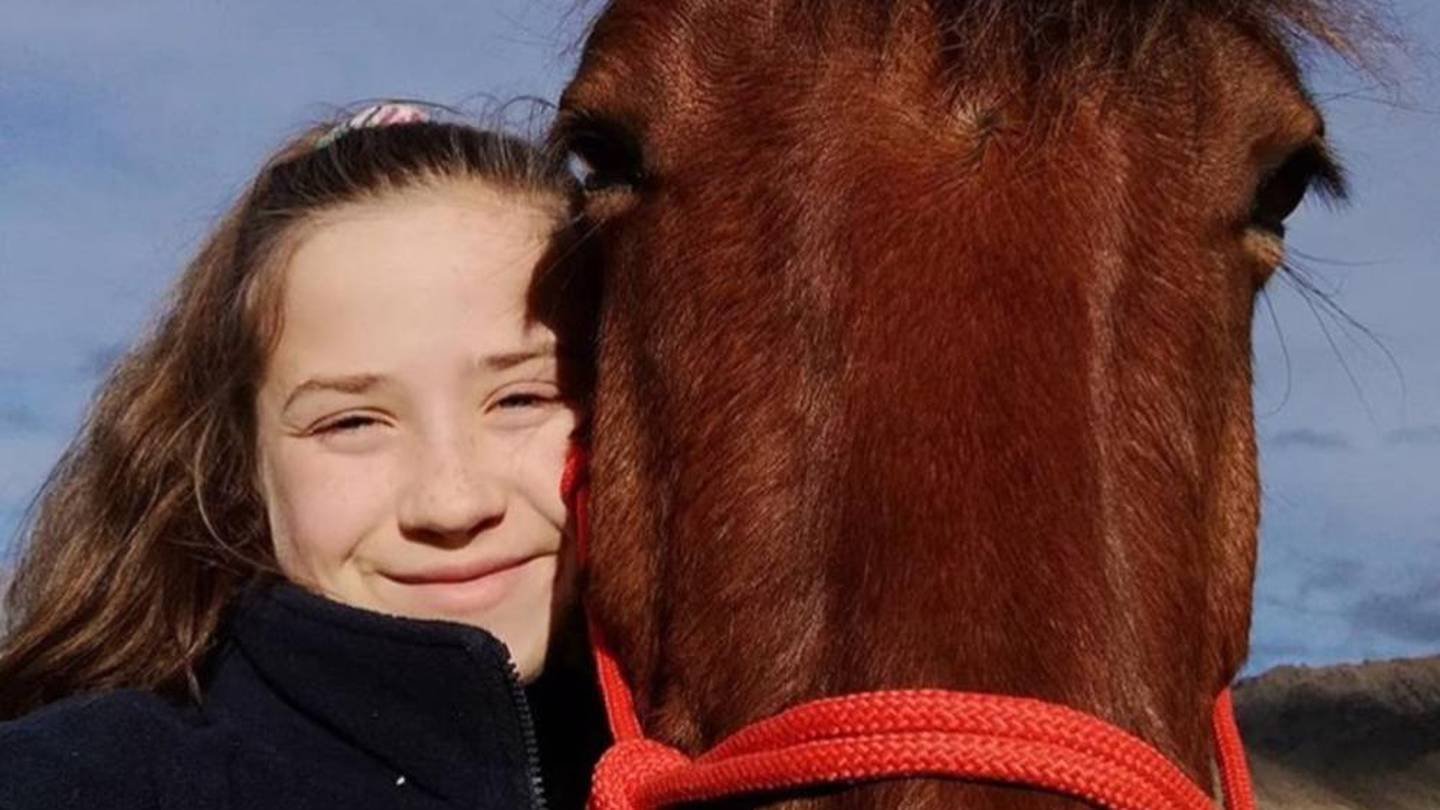
In 2019, Eliza-Jayne Coetzee was 13 when she fell from "one of her beloved horses", Boxer, who had bolted when she climbed on him.
In a recently released finding, coroner Heather McKenzie said the Omarama teen died from blunt-force trauma, causing a basal skull fracture and significant injury to the brain.

Eliza-Jayne had been around horses from a young age and had been riding almost every day in the three years before her death.
A Givealitte page created at the time by a family friend said the teen died after "falling from one of her beloved horses" and that there was "some comfort in knowing that Eliza passed away doing something that she loved".
Her mother, Tania Coetzee, said this week that losing her daughter was the hardest thing she had ever experienced.
"She was a bright, kind, talented young lady who had the brightest kind of future because she was such a decent human being," she said.
"Ask anyone in town where she spent only four of her 13 and a-half years."
The coroner described how Ms Coetzee had bought Eliza-Jayne her "project horse" called Boxer in August 2019.
She was not allowed to ride Boxer until fully trained; however, she could groom him, put on a saddle and bridle and lunge him. Lungeing a horse is when the animal is led in a large circle by a trainer holding a long lead rein.
About 5pm on October 4, 2019, Eliza-Jayne was doing groundwork with the horse to prepare him to be ridden.
A family friend, Marju Laukkanen, was with the teen at the time and told her not to mount the animal, but she did not listen and the horse bolted across a paddock towards a fence.
Eliza-Jayne fell from the horse and on to the side of the fence before landing on her back on the ground. Members of the public and emergency services attempted to save her life, but she died at the scene.
CPR was performed on Eliza-Jayne for almost an hour with no signs of life or shockable heart rhythm being detected before a registered nurse arrived on the scene.
The nurse was advised over the phone to stop CPR and perform "open finger thoracostomies" to decompress Eliza-Jayne’s chest.
However, she was unfamiliar with the procedure and misheard instructions over the phone due to windy conditions at the site.
This meant the procedure was performed incorrectly with the limited equipment available and caused injuries, including puncture wounds to Eliza-Jayne’s right ventricle.
Ms McKenzie referred to the report of Hato Hone St John medical director Dr Tony Smith, who said although the injury was "very regrettable", it occurred in unusual circumstances and during lifesaving attempts.
Dr Smith said the mortality rate for a person who went into cardiac arrest before first responders could reach the scene following blunt force trauma was "almost 100%".
That meant Eliza-Jayne had an almost 100% chance of dying when the nurse arrived on the scene and she could have only survived if immediate action was taken.
There was an important lesson to be learnt from the incident by doctors and nurses attending emergencies in out-of-hospital settings, Dr Smith said.
"In my opinion, that lesson is that decompressing the chest in the setting of a presumed tension pneumothorax is an invasive procedure with the possibility of saving a life, but conversely it also carries the risk of causing harm," Dr Smith said.
However, Dr Smith concluded that the injury to the teen’s right ventricle did not cause or contribute to her death, because at that point "her death sadly was inevitable".
Ms McKenzie endorsed Dr Smith’s recommendations about lessons to be learnt for medical staff attending emergencies in public settings.
The teen’s mother said she hoped her daughter was now resting in peace.
By Hazel Osborne








